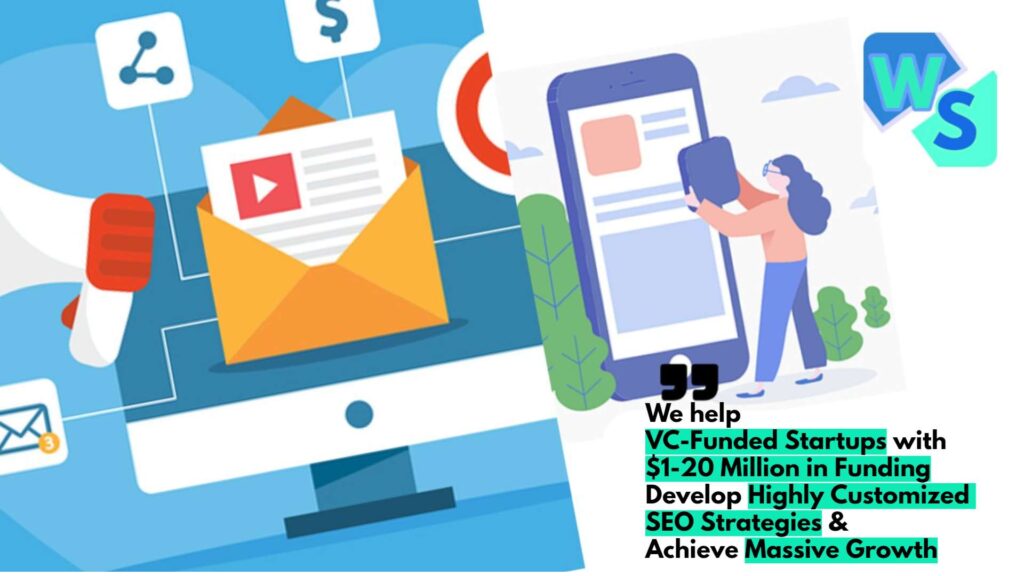Identifying Your Target Audience
Importance of Target Audience Research
Nailing down who you’re marketing to is like discovering the secret sauce to boost your business efforts. Getting to the core of your audience’s likes, dislikes, and nitty-gritty details means you can tweak your products and messages until they sing like a well-tuned piano. It ain’t just about having a plan – it’s about having the right one that grabs attention, drives sales, and gets you those sweet returns on investment.
Companies hitting it out of the park with their audience research aren’t just spinning their wheels—they’re cruising straight toward their goals. They channel their resources better and forge deeper bonds with their customers. Want to dive deeper? Check out our guide on how to define target audience.
Here’s a quick peek at why getting chummy with your audience matters:
| Benefit | What’s In It For You |
|---|---|
| Clearer Messaging | Speak the language your audience understands. |
| Smarter Products | Build stuff your customers actually want. |
| Deeper Connections | Connect on a personal level, ramp up the engagement. |
| More Bang for Your Buck | Spend less, gain more with focused strategies. |
Case Studies in Effective Targeting
Let’s roll out some stories where businesses turned target audience understanding into gold. These folks didn’t just guess—they nailed their audience and watched success roll in.
Dollar Shave Club
These guys knew their way around marketing by zeroing in on budget-savvy men who loved convenience. Their quirky, viral ad got a whopping 3.2 million views in no time, sending their growth into overdrive.HubSpot
With marketers and sales folks as their bullseye, HubSpot crafted killer content that drew in their ideal crowd, who happily converted and stayed. Talk about a growth spurt! (Digital First AI)Fabletics
Fabletics went big by digging into customer likes and behaviors to nail personalization. Their emails and recommendations struck home, building a base of loyal fans.Airbnb
Tapping into the wanderlust and love for unique experiences, Airbnb knew exactly what tickled their audience’s fancy. Their pinpoint targeting rocked the travel world.
These tales let you in on the magic of target audience analysis, showing you that when you really get your audience, your marketing becomes a symphony of success.
Methods for Target Audience Research
Nailing down who your marketing magic will land on is like finding the golden ticket in a chocolate bar. This part is about how you can figure out who is really tuning into your message, using counting bits, chats, and a sprinkle of social network wizardry.
Quantitative Research Methods
Here’s where we roll up the sleeves and look at numbers. Quantitative methods are like having your GPS in marketing, giving you raw, cold facts about who’s out there. It’s the stuff that gives you a clear map—numbers like who is loyal and who is walking out the door upset you hiked the prices again. Handy tools include surveys, which are question marathons where you get people to spill the beans about their experiences, likes, and that little something that makes them stay or stray (Silverback Strategies).
| Research Method | Description | Benefits |
|---|---|---|
| Surveys | Send out questions and get answers from many people | Fast, cheap, shows the bigger picture |
| Online Analytics | Using stuff like Google Analytics to follow the digital trail | Detailed stats on what users are up to on your site |
| Experiments | Lab coats not required for marketing tests | Find out what really makes things tick |
Crunch these numbers and you can laser-focus your marketing spiels right where they’ll hit the jackpot.
Qualitative Research Methods
Time to sit back and listen. Qualitative research is all about understanding the why behind the what. It’s like being a bit of a therapist for your data—more sofa, less spreadsheet. You’ll dive into real conversations. Pull out those stories your audience loves to tell while sipping coffee over some focus group talk, long cheerful interviews, or those questions that aren’t just yes or no.
| Research Method | Description | Benefits |
|---|---|---|
| Focus Groups | Small chats with select folks to sniff out feelings | Diversity opens up layers of understanding |
| Interviews | Deep dive sessions to get the nitty-gritty | Just you and them—for rich, detailed insights |
| Ethnographic Studies | Watch people in their turf, going about daily stuff | See how they really act when no one’s looking |
Snagging these insights boosts your power to create words and messages that speak directly to your target’s soul.
Harnessing Social Media Analytics
No point in pretending—everyone and their grandma are social these days! If you want to know what shampoo brand your audience prefers or how they really feel about pineapple on pizza, social media holds the answers. Watch who is liking, sharing, or commenting on your posts to find out if you’re hitting the sweet spot or need some course correction.
| Social Media Metric | Description | Insights |
|---|---|---|
| Engagement Rate | Count the love—likes, shares, and emojis | See what gets folks buzzing and the sleepy stuff |
| Follower Demographics | Who they are—age, location, interests | Sharpen your content to do more of what they like |
| Reach and Impressions | Number who strolled past your post and who stopped to check it | Gauges visibility of your messages |
Leveraging these social cues means you’re crafting strategies that jive with the audience’s groove—upping your marketing game big time.
All these methods add color to the black-and-white of marketing strategies. Marrying stats with stories lets businesses connect better with their audience. Pop over to our resources on target audience analysis if you’re keen to dig deeper into this marketing magic carpet ride.
Understanding Psychographics
Psychographics is all about digging into the mind of consumers. This goes beyond the usual stuff like age and gender. Instead, it’s like getting into their inner workings and figuring out what makes them tick.
Definition and Significance of Psychographics
Think of psychographics as the ultimate personality test for consumers. It’s about figuring out what people value, their dreams, and even their social standing. Unlike your run-of-the-mill demographics based on things like age, gender, or education (Hotjar), psychographics helps businesses get the juicy, behind-the-scenes info.
You get a peek into things like:
- Values: What’s important to them.
- Interests: What hobbies they chase after.
- Desires: What really gets them going.
- Lifestyles: What their day-to-day looks like.
- Attitudes: How they feel about different stuff (SurveyMonkey).
These aren’t just random traits; they’re windows into how customers really feel about a brand or product. Know these, and you can serve up marketing that feels personal and hits home.
Utilizing Psychographics in Marketing
Now, let’s get down to brass tacks. Using psychographics means you can group folks by what really matters to them, not just any old demographic data (SurveyMonkey). It’s like combining the peanut butter of demographics with the jelly of psychographics for marketing magic.
Here’s why it rocks:
| Benefit | Description |
|---|---|
| Enhanced Targeting | Forget broad strokes; it’s about zeroing in on attitudes, interests, and what people care about. |
| Improved Messaging | Crafting messages that speak directly to them, like you’re in their head. |
| Greater Engagement | Making them feel like you really get them, driving them to interact. |
| Emotional Connection | Creating a bond that keeps them coming back for more, like it’s a brand they can trust and adore. |
Get familiar with these psychographic bits—personalities, lifestyles, interests, opinions, and values. When you sprinkle this secret sauce over your marketing tactics, you tune into your audience in a way that makes them listen. It’s all about hitting that sweet spot where strategy meets the heartfelt connection, boosting your target audience research.
Demographics vs. Psychographics
In marketing, knowing your crowd is key. A big part of getting to know them means figuring out the difference between demographics and psychographics. Each has its own role in crafting successful audience insights.
Differentiating Between Demographics and Psychographics
Demographics are like the stats on a baseball card—they’re the basic numbers that give you a snapshot of a population. We’re talking about age, gender, education, income, and other basics. Think of it as asking the straightforward, “Who’s buying?”
Now, psychographics digs into the soul of consumers. Their values, their interests, what makes them tick—it’s like peering into their minds. They answer, “Why do they buy?” When these two data sets join forces, you’ve got a killer view of who your customers are and what moves them to action (Hotjar, University of Houston Libraries).
| Aspect | Demographics | Psychographics |
|---|---|---|
| Focus | Who’s checking out your stuff (age, gender, income) | Why they’re into it (values, interests, lifestyle) |
| Data | By the numbers (age, gender, education) | From the heart (attitudes, aspirations, needs) |
Mixing these two types of info lets you whip up marketing plans that hit both the “who” and the “why” right on the nose.
The Role of Demographics in Audience Analysis
Demographics are the bread and butter of audience analysis. They lay down a baseline profile of who might be walking into your store or clicking on your ad. For instance, those numbers can show you the average age and wallet size you’re dealing with. This info helps businesses figure out how much to charge, which megaphone to use, and what catchy slogan will hit home.
In a marketing campaign, slicing up the audience by demographics allows for laser-focused advertising. If you’re selling high-end watches, for example, demographic data helps aim your ads at folks with the cash to splash, making sure your marketing dollars aren’t taking an unnecessary detour.
Also, diving into target audience demographics can uncover shifting interests across ages or income levels. This keeps you in the game, adapting as trends change faster than seasons in fashion.
Adding demographics into target audience analysis sharpens your aim and boosts your ad game. Combine that with psychographics and you start weaving messages that are not just heard but felt, driving purchases and forging brand loyalty.
The Power of Personalization
In today’s marketing game, making it personal is key. Brands are getting up close and personal with their audiences, offering experiences that hit the sweet spot of their needs and wants.
Personalization in Marketing Strategies
To ace personalized marketing, digging into who you’re talking to is a must. With smart insights that reveal the heartbeat of your audience, you can hit all the right notes. According to Zendesk, a hefty 68% of folks out there want everything to feel tailor-made just for them. This is a big nudge for businesses to gear up their marketing to deliver just that.
Personalization isn’t a one-trick pony. Think targeted emails, custom web experiences, and spot-on product suggestions. Stats show a whopping 99% of marketers feel personalization builds better customer bonds, and 80% say folks are more likely to buy when they feel that personal touch (Silverback Strategies).
Now, to get that personal touch right, marketers need tools that sniff out data like customer habits and faves. This info helps tailor content that makes the audience lean in and engage more.
| Personalization Move | What You Get Out Of It |
|---|---|
| Targeted Emails | More opens, more clicks, more buys |
| Tailored Product Picks | Boosted sales and happier customers |
| Personal Web Experiences | Better user times and deeper clicks |
Benefits of Personalized Marketing
Personalized marketing isn’t just smart—it’s a game-changer for keeping customers coming back for more. Companies that nail this find their customers stick around and talk them up (Digital First AI). By making people feel that you get them, you’re building warm fuzzies towards your brand.
Here’s why making it personal works wonders:
- Amped-Up Engagement: Custom content speaks to what the audience digs, pulling in more attention.
- Loyal Fans: Shoppers keep coming back to brands that “get” them and their vibe.
- More Sales: When marketing hits home, folks are way more likely to hit the buy button.
But, the journey isn’t without its bumps. Getting a read on customer likes and quirks can be tough. Tools like Google Analytics and tracking user paths help connect the dots. Sharing content that matches your audience’s values is gold for building those bonds that keep them loyal.
In short, tapping into personalization punches above its weight in meeting customer desires, sparking uptake, and reshaping how marketing is done. With solid audience insights, brands can chat meaningfully with their audiences, setting the stage for lasting success.
Overcoming Challenges in Target Audience Analysis
Figuring out who you’re talking to isn’t always a walk in the park. Creating content for a specific group while still grabbing the attention of a larger crowd can be like walking a tightrope. Knowing the hurdles and having handy tactics in place can amp up how well your audience connects with your content.
Balancing Niche Content and Broad Marketing
One of the sticky spots in audience analysis is juggling between making niche content that hits the mark for a smaller crowd and sticking to big-picture marketing plans. Many marketers get tangled in these ropes because they miss the mark on understanding their audience, leading to content that doesn’t quite fit (Agility PR Solutions).
Niche content is like catnip – great for making a few customers stick around and boosting sales numbers. But it might leave a bunch of potential fans out in the cold. Finding the middle ground means whipping out some tricks like:
- Customer Profiles: Make detailed profiles blending demographics and psychology to get a better grip on tastes.
- Market Research: Buddying up with research firms can spill the beans on what folks think about a brand and its products, helping create better-aligned content.
Here’s a look into juggling niche content with the big-picture game:
| Aspect | Niche Focus | Broader Focus |
|---|---|---|
| Audience Engagement | High, zeroed in on a small group | Less, but talks to a bigger crowd |
| Content Relevance | Sky-high, crafted for specific likes | General, might miss hitting the spot |
| Conversion Rates | Often better thanks to sharp messaging | Possibly lower, but gets out there more |
| Marketing Costs | Probably efficient | Higher costs tied to casting a wider net |
Putting these tricks to good use can lead the way to hitting the target without missing out on potential reach.
Strategies for Effective Target Audience Analysis
To dodge the pitfalls in audience analysis, businesses can employ different plans. Some smart ways to go about this include:
Data Utilization: Use tools like Google Analytics to keep tabs on what users do on websites and social media. Heat maps show where they spend time, hinting at what interest them.
Surveys and Interviews: Chatting directly through surveys or interviews brings back first-hand, countable insights into people’s needs and likes.
Focus Groups: Gather groups for feedback on perceptions and attitudes toward products and marketing, providing rich data.
Competitor Analysis: Peek over to competitors to see what audience preferences and winning strategies they’re putting to work. This step can shine a light on what clicks with the target crowd.
Using these tactics helps firms fine-tune their audience analysis, creating campaigns with a higher chance of hitting the jackpot, saving time, cash, and effort by homing in on promising crowd(s).
For more thorough guidance on pinning down your audience, check our reads on target audience segmentation and target audience demographics. Getting a grip on audience nuances is golden for any marketing approach aiming to hit it big.
Importance of Keeping Up with Market Trends
Keeping up with market trends is like knowing the secret sauce for a thriving business. You gotta be tuned into what your customers are all about—what they love, what they want, and what makes them tick. This requires constant tweak and attention.
Challenges of Understanding Customer Behavior
Figuring out customer behavior can be quite the puzzle! People’s preferences aren’t a one-size-fits-all deal. It’s kinda like keeping up with the latest gossip; word of mouth actually makes a whopping 20% to 50% of all buying choices. So, it’s pretty clear: businesses gotta stay buddy-buddy with their customers to hit that sweet spot.
And with society doing its usual twist and turn, folks’ likes and dislikes do a dance too. So, keeping an eye on who’s buying and why is a task not to let slide. Regularly sizing up demographics helps in staying in the loop. Because, believe it or not, what people dig now might be totally out of style tomorrow.
Tracking and Measuring Marketing Success
To check if the whole marketing gig is working, you gotta track it. Mixing psychographics—that’s why people buy—with who’s buying paints a clearer picture. Demographics tell you the ‘who,’ but psychographics get to the heart of the ‘why’.
Getting a solid grip on your audience helps you reach out to those who really matter, bump up your rapport with them, and give you a leg up on the competition. This savvy combo not only boosts your sales but ramps up your business game overall.
If you’re keen to learn more about honing in on your markets and audiences, diving into target audience analysis tools and strategies is a wise move. Keeping a check on feedback from your customers can give you valuable insight and helps steer the business in the right direction for lasting success.
Sizing Up the Competition
In the rough and tumble of marketing, keeping an eye on your industry frenemies can shed some serious light on what you should be doing to up your game. Getting the lowdown on your competitors lets you see the big picture and use that info to outsmart the competition in targeting.
Benefits of Checking Out the Competition
Digging into what your rivals are up to isn’t just peeking into someone else’s homework. It’s about catching hidden gems and figuring out where you can shine brighter. Here’s why it’s worth your while:
- Spot What Makes You Special: By scoping out the others, you can figure out what makes you stand out and brag about it in your marketing spiel.
- Better Customer Chats: Get a handle on how the competition is handling their customers, and you’ll know what to do (or not do) to keep your fans coming back.
- Killer Social Media Moves: See what’s catching on with others, tweak it to fit your style, and boost your brand’s social media game.
- Boost Your SEO Power: Look at the keywords and content your rivals are betting on – it can help you get noticed on those search engines.
- Hit the Right Folks: Learn how competitors attract their crowd, then craft ads and messages that hit home.
Juice Up Marketing Tactics with Competitor Know-How
Snatching some wisdom from your competition can really boost your marketing playbook. Here’s what you stand to gain:
- Create Buzz-Worthy Content: Check out what stories your rivals are spinning and how their audience responds. This can help you whip up content that keeps your crowd buzzing. Many marketers (22% reported) are itching for ways to create engaging stuff that hits their audience right where it counts (HubSpot).
- Grasp Customer Moves: Peek into how opponents are engaging folks. Tools like Google Analytics can give you the scoop to tweak your tactics based on real data.
- Purpose-Driven Content: Watch how your competitors deal with social issues. It might spark content that not only speaks to your audience but also encourages them to stick around (HubSpot).
- Stay on Top of Performance: See how your competition measures success and borrow a page for your KPIs. This helps ensure you’re always moving towards your specific targets (HubSpot).
Using competitor insights can help you refocus your target strategies, guaranteeing that your marketing packs a punch and stays relevant. For a deeper dive, check out our handy guides on target audience analysis and identifying target audience.




















